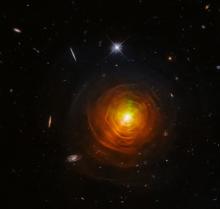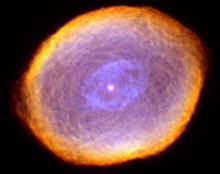Listen to today's episode of StarDate on the web the same day it airs in high-quality streaming audio without any extra ads or announcements. Choose a $8 one-month pass, or listen every day for a year for just $30.
You are here
Feedback
Stars are born when giant clouds of gas and dust break apart and collapse. And if that’s all there was to it, the Milky Way galaxy would give birth to a couple of hundred stars every year. Instead, thanks to feedback from the stars themselves, it makes only a few.
Feedback is a process that clears away the material for making more stars, but can also trigger the birth of more stars.
Very young stars, for example, produce strong winds and jets that blow away the gas and dust around them. Since stars are born in clusters, a lot of young stars can be sweeping away the star-making material at the same time. That greatly reduces the number of stars that can be born in a cluster.
Mature stars add to the feedback — not only with winds, but also with radiation. Hot stars generate a lot of ultraviolet radiation, which vaporizes tiny particles of dust — eliminating possible building blocks for new stars.
The heaviest stars explode as supernovae. These blasts can clear out the space for light-years around a supernova, creating big, empty bubbles. And supernovae also accelerate subatomic particles around them to almost the speed of light. These “cosmic rays” help to sweep away the raw materials for making more stars.
But supernovae can also enhance the stellar birth rate. Their blast waves can cause distant clouds of gas and dust to collapse to form stars. So feedback is a complex process — one that both aids and hinders the birth of new stars.
Script by Damond Benningfield






